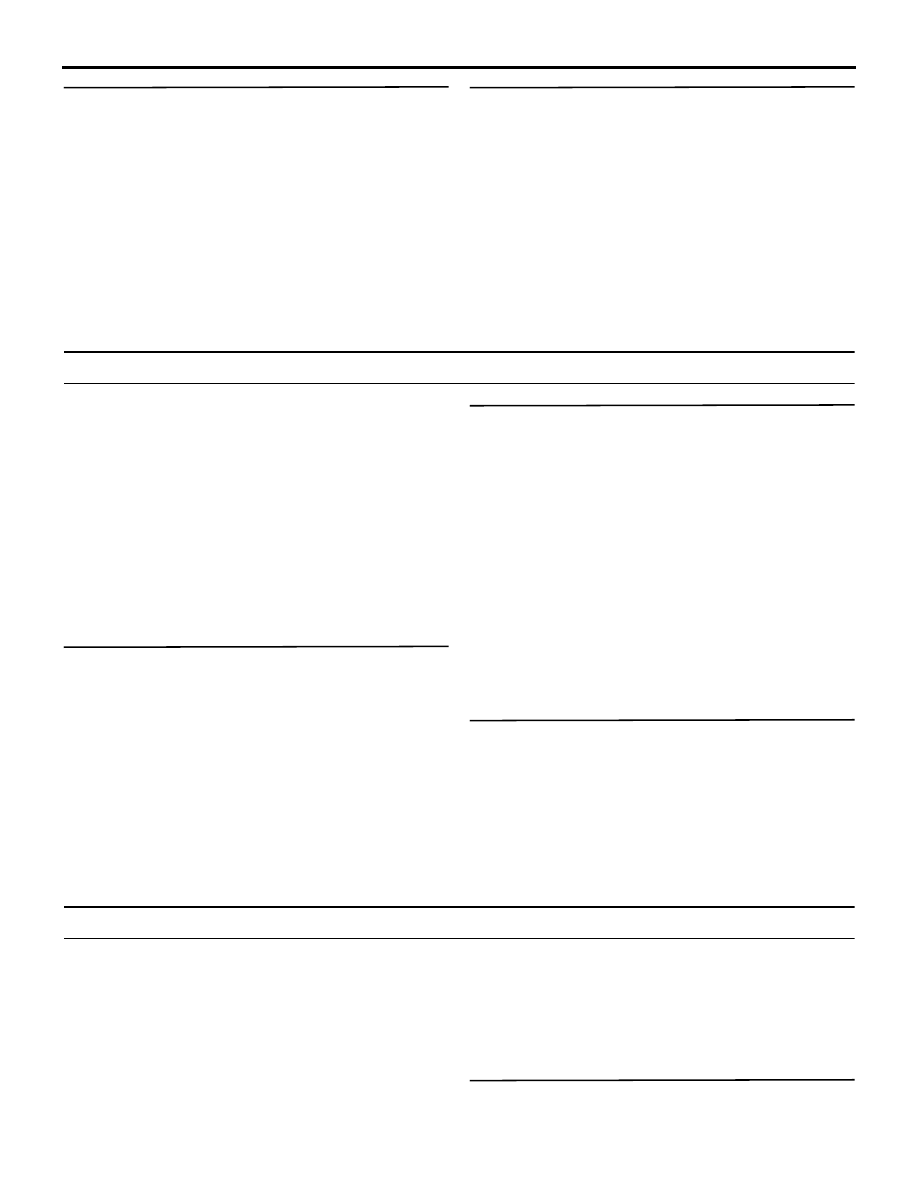Mitsubishi Outlander (2013+). Manual - part 315

TROUBLESHOOTING
MULTIPOINT FUEL INJECTION (MPI)
13A-141
STEP 4. Check throttle body (throttle valve
portion) contamination.
Q: Is the check result normal?
YES :
Go to Step 5.
NO :
Throttle body (throttle valve area) cleaning
(Refer to
).
STEP 5. Visual check of ignition spark.
• Remove the spark plug and install it to the ignition
coil.
• Connect the ignition coil connector.
• Disconnect all injector connectors.
• At the engine start, check each spark plug pro-
duces a spark.
Q: Is the check result normal?
YES :
Replace the engine-ECU.
NO :
Check Inspection Procedure
− ignition
circuit system (Refer to
Inspection Procedure 12: The Feeling of Impact or Vibration when Decelerating
COMMENTS ON TROUBLE SYMPTOM
• Failure is possibly caused by an insufficient
amount of intake air due to failed electronic-con-
trolled throttle valve system.
PROBABLE CAUSES
• Failed electronic control throttle valve system
• Contamination around the throttle valve
• Failed engine-ECU
DIAGNOSIS PROCEDURE
STEP 1. M.U.T.-III diagnosis code
Q: Is diagnosis code set?
YES :
Inspection chart for diagnosis code (Refer
to
NO :
Go to Step 2.
STEP 2. M.U.T.-III data list
• Refer to Data List Reference Table
.
a. Item 11: Accelerator pedal position sensor
(main)
b. Item 12: Accelerator pedal position sensor
(sub)
c. Item 13: Throttle position sensor (main)
d. Item 15: Throttle position sensor (sub)
Q: Are the check results normal?
YES :
Go to Step 3.
NO :
Perform the diagnosis code classified check
procedure for the sensor that has shown an
abnormal data value (Refer to Inspection
Chart for Diagnosis Code
STEP 3. Check throttle body (throttle valve
portion) contamination.
Q: Is the check result normal?
YES :
Replace the engine-ECU.
NO :
Clean throttle body (throttle valve portion)
(Refer to Throttle Body (Throttle Valve Area)
Cleaning
).
Inspection Procedure 13: Knocking
COMMENTS ON TROUBLE SYMPTOM
• The failure could possibly be caused by the failed
detonation control system, improper thermal
value of the spark plug and so on.
PROBABLE CAUSES
• Failed detonation sensor
• Failed detonation control system
• Failed spark plug
• Failed ignition system
• Failed engine-ECU
DIAGNOSIS PROCEDURE
STEP 1. M.U.T.-III diagnosis code
Q: Is diagnosis code set?